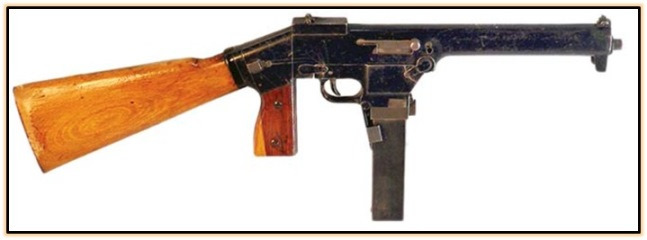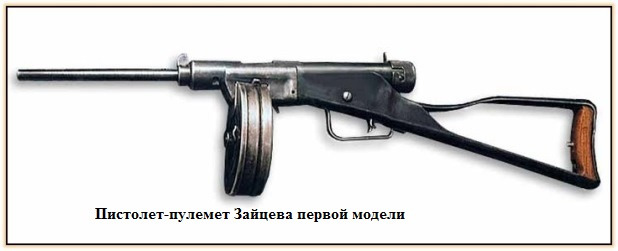Project of the Wimmersperg Spz ersatz assault rifle (Germany. 1945).
The Wimmersperg Spz is a family of German assault rifles developed at the end of World War II by Austrian gunsmith Heinrich von Wimmersperg. There are two possible origins of the abbreviation “Spz”: 1) an abbreviation of the German “spielzeug”, meaning “toy” and 2) “Sp” of STEN-pistole, and “z” of “zweiteilig”, German “consisting of two parts”. The weapon was a cheap ersatz assault rifle with a free (or semi-free?) bolt, developed according to a concept similar to the British STEN SMG, using StG.44 components. “Wimmersperg” was developed for an intermediate cartridge of 7.92x33 and used magazines for 30 rounds from the StG-44.
1) Spz-l (“lange Bauart”, long sample) with a hammer-type trigger, a buttstock, the “neck” of which played the role of a pistol grip;
 2) Spz-kr (“kurze Bauart mit Regler für Serienfeuer”, short sample with a regulator for continuous firing) with a hammer-type trigger, without a pistol grip (its role was played directly by the magazine);
2) Spz-kr (“kurze Bauart mit Regler für Serienfeuer”, short sample with a regulator for continuous firing) with a hammer-type trigger, without a pistol grip (its role was played directly by the magazine);
3) Spz-kv (“kurze Bauart mit Verschlußzündung”, short sample with bolt locking) with a striker-type trigger, without a pistol grip (its role was played directly by the magazine).
At the moment, there is no data on the production and use of this type of weapon: there is no mention of this either in the official documents of the Third Reich, or in the archives of German arms companies. Perhaps only a few prototypes were produced or the project remained on paper. But von Wimmersperg has been confirmed to have contacts with Mauser, Simson & Co, and Fokker regarding the development and production of some weapons. From the performance characteristics it is known that the length of the weapon was 680 mm (it is unknown, however, which version we are talking about), and the sighting range was 400 meters.












